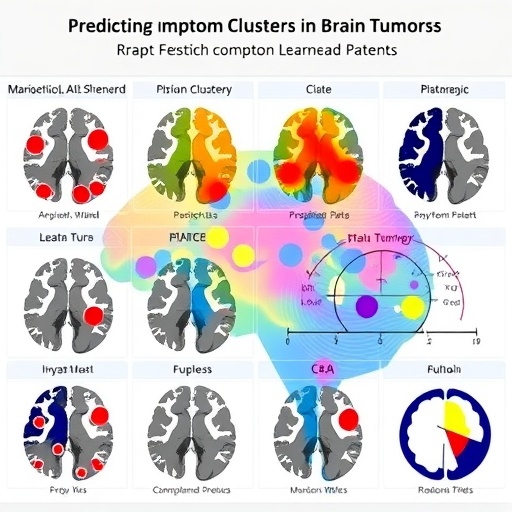In a groundbreaking study published in BMC Cancer, researchers have unveiled promising advancements in the battle against high-risk acute myeloid leukemia (AML) through the innovative use of prophylactic third-party natural killer (NK) cell infusions following hematopoietic stem cell transplantation (HSCT). Relapse remains a significant challenge in AML treatment, particularly after HSCT, and this new approach targets the critical early post-transplant period to strengthen the body’s anti-leukemic defenses.
The study explores the safety and feasibility of administering ex vivo expanded NK cells derived from third-party donors soon after HSCT. Unlike traditional donor lymphocyte infusions, NK cells offer the unique advantage of exerting graft-versus-leukemia (GvL) effects without exacerbating graft-versus-host disease (GvHD), making them an attractive immunotherapeutic option. This trial marks an important milestone in harnessing innate immunity to augment post-transplant outcomes in high-risk AML patients.
Eleven patients with high-risk AML were enrolled in this single-arm, non-randomized trial, receiving two doses of frozen NK cell products at a carefully timed schedule—days 6 and 12 post-HSCT. Each infusion comprised a dose of 5 million NK cells per kilogram, with stringent quality controls ensuring a purity threshold of 80% CD56⁺CD3⁻ cells. These NK cells underwent functional validation via cytotoxicity assays against K562 leukemia target cells, confirming their potent anti-leukemic capacity prior to administration.
Remarkably, the prophylactic NK cell infusions were well tolerated across all participants, with no incidence of grade 3 or higher infusion-related toxicities reported. This strongly supports the safety profile of administering allogeneic third-party NK cells early in the post-transplant period, which is traditionally fraught with immune vulnerabilities. Mild to moderate acute GvHD (grades 1–2) developed in about one-third of patients, while chronic GvHD incidence remained relatively low.
Cytomegalovirus (CMV) reactivation, a common post-HSCT complication, occurred in nearly half of the cohort, underscoring the importance of vigilant monitoring and preemptive antiviral therapies in this setting. Despite this, no NK cell infusion-related viral complications were identified, highlighting the immunotherapy’s compatibility with standard antiviral prophylaxis protocols.
Over a median follow-up duration of approximately 8.5 months, the incidence of AML relapse was 27%, with relapses occurring at a median of 111 days post-transplant. This relapse rate, while still notable, compares favorably to historical controls in similar high-risk AML populations managed with conventional HSCT alone. Survival analyses revealed a striking disparity based on remission status at the time of HSCT; patients in first or second complete remission experienced an overall survival rate of over 80%, whereas those not in remission registered around 20%.
These findings resonate deeply with the growing consensus that the timing and disease status at transplant critically influence post-HSCT outcomes. By capitalizing on the immunomodulatory effects of third-party NK cells soon after engraftment, clinicians may be able to tip the balance in favor of long-term disease control. The early prophylactic infusion approach provides the immune system with a prompt, targeted boost before leukemia cells can exploit post-transplant immune suppression.
While the results are encouraging, the researchers caution that relapse remains a considerable hurdle. The study’s limited sample size and single-arm design underscore the need for larger, randomized clinical trials to rigorously evaluate the therapeutic benefits and optimize dosing schedules. Refining NK cell expansion techniques and identifying patient subpopulations most likely to benefit are also critical next steps.
Beyond AML, this pioneering work opens avenues for broader applications of third-party NK cell therapies in other hematologic malignancies and transplant settings. NK cells’ innate ability to recognize and destroy malignant cells without prior sensitization positions them uniquely for rapid, off-the-shelf immunotherapy solutions, circumventing some limitations of T cell-based approaches such as graft-versus-host disease.
This study exemplifies the transformative potential of cell-based immunotherapies in oncology, reflecting a shift towards precision medicine strategies that harness the immune system’s natural repertoire. The integration of advanced cell manufacturing, careful immunophenotyping, and clinical safety monitoring has set a new standard for adopting novel immunotherapies in vulnerable post-transplant patients.
As research progresses, coupling NK cell infusions with emerging immunomodulatory agents or checkpoint blockade therapies may further enhance anti-leukemic efficacy. In particular, combining NK cells with agents that mitigate inhibitory signals within the tumor microenvironment could unleash even more robust cytotoxicity against residual disease.
The promise of NK cells lies not only in their cytotoxic potential but also in their ability to rapidly home to sites of disease and interact with the host immune network. Understanding their in vivo kinetics, persistence, and functional dynamics post-infusion will be instrumental in optimizing clinical protocols and achieving durable remissions.
In summary, this pioneering investigation provides compelling evidence that early prophylactic infusions of third-party NK cells post-HSCT are both safe and practically feasible for high-risk AML patients. Despite ongoing challenges with relapse, the improved outcomes relative to historical benchmarks offer a hopeful glimpse into the future of immune-based therapies for hematologic cancers. Continued innovation and clinical validation will determine their ultimate role in standard treatment paradigms.
The study’s authors advocate for comprehensive, multi-center randomized trials to confirm these promising preliminary findings and to explore the optimal integration of NK cell immunotherapy with other post-transplant interventions. Their vision encapsulates a new era where tailored, biologically rational strategies bring tangible survival benefits to patients facing aggressive leukemias.
This research underscores the immense potential of harnessing innate immune effectors such as NK cells to reshape the landscape of post-transplant leukemia management. With further refinement and clinical adoption, NK cell-based prophylaxis could become a vital weapon in reducing relapse and improving long-term survival for thousands of patients worldwide.
Subject of Research: Prophylactic administration of ex vivo expanded third-party natural killer (NK) cells post-hematopoietic stem cell transplantation in high-risk acute myeloid leukemia patients.
Article Title: Evaluating the safety and feasibility of prophylactic third-party NK cell administration in high-risk AML patients post-HSCT.
Article References:
Barkhordar, M., Tavoosi, S., Tavakoli, S. et al. Evaluating the safety and feasibility of prophylactic third-party NK cell administration in high-risk AML patients post-HSCT. BMC Cancer (2025). https://doi.org/10.1186/s12885-025-15362-8
Image Credits: Scienmag.com
DOI: https://doi.org/10.1186/s12885-025-15362-8
Tags: clinical trial on NK cellsex vivo expanded NK cellsgraft-versus-host disease managementgraft-versus-leukemia effectshematopoietic stem cell transplantationhigh-risk acute myeloid leukemia treatmentimmune response in leukemiainnate immunity in cancer therapyprophylactic NK cell therapyrelapse prevention in AMLsafety of NK cell infusionsthird-party NK cell donors





